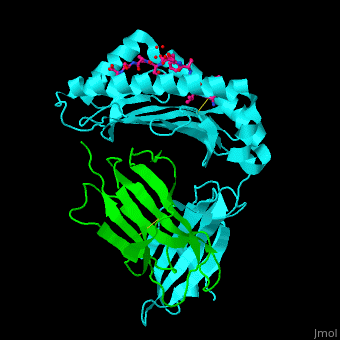Function
Major Histocompatibility Complex (MHC) molecules bind peptides derived from degraded proteins and present these peptides on the surface of the cell. Cytotoxic T-lymphocytes or helper T cells recognize the MHC:peptide complex on the surface of the cell and trigger an immune response if the presented peptide (antigen) is suggestive of a pathogenic or foreign protein. In this way, MHC molecules allow for immune system detection of protein presence, making them an essential part of the organism’s immune system. MHC molecules are divided into Class I and Class II molecules based on the types of cells that typically express them and the types of peptides they typically bind.
- MHC class I (Major Histocompatibility Complex Class I) are found in all nucleated cells. These cell surface proteins display peptides from cellular intrinsic proteins[1]. For more details see
- MHC class II are found in professional antigen-presenting cells like macrophages. These cell surface proteins display peptides from cellular extrinsic proteins[2].
For information on MHC class II interactions with T-cell receptor and gliadin peptide see SP3.4-TCR-HLA-DQ8-α-1-gliadin complex.
Structural highlights
.
The [3]. Water molecules shown as red spheres.
3D structures of MHC
MHC 3D structures of MHC

